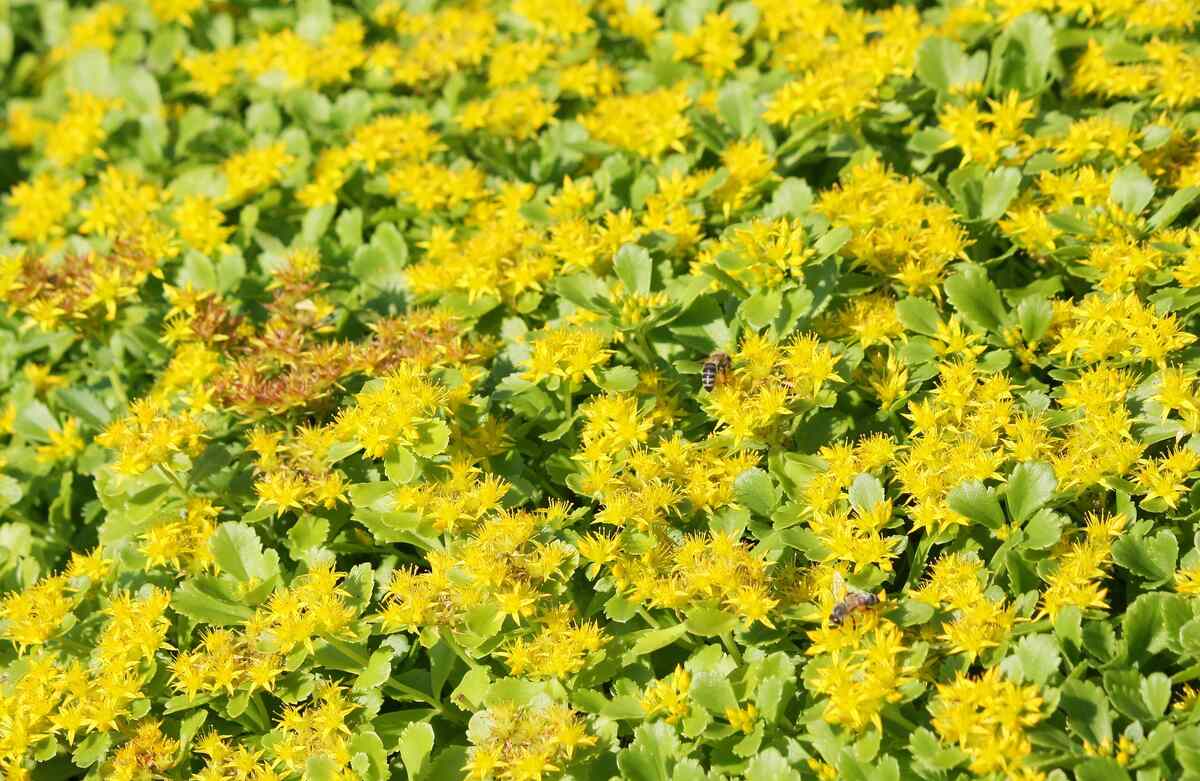
Having a drought-friendly xeriscape doesn’t mean your lawn has to be devoid of green life. To add some classy and colorful vegetation to your xeriscape, discover the best plants for xeriscaping by region.
Xeriscaping design incorporates native plants when possible, so when you’re in the market for xeriscape plants, it’s important to consider what native plants grow well in your area. Learn from an expert what factors to consider when you are choosing plants for your xeriscape.
Here’s a list of xeriscape plants that grow well in different regions of the U.S.:
Southwest Region (Including California)
Sonoma Sage (Salvia sonomensis)
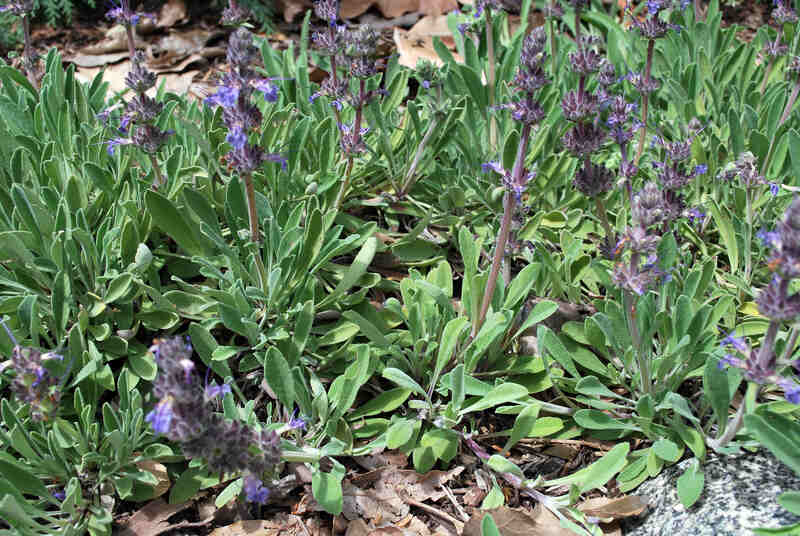
Also called creeping sage, Salvia sonomensis is an aromatic perennial herb native to the Mediterranean climate. In the United States, sage grows naturally in Sonoma County, Napa County, and the coastal area from Santa Barbara to San Diego.
It has attractive wrinkled silver-green leaves and purple, red, pink, or white blossoms that spread a delicate scent when exposed to the sun’s heat.
- Mature Size: Short, 1-2 feet tall and 5-15 feet wide; suitable as flowering ground cover
- Light: Grows in full sun and partial shade
- Soil: Requires well-drained soil
- USDA Plant Hardiness Zones: Thrives in the coastal and foothill areas of climate zones 8 to 10
Pro Tip: If you are at a loss for where to start, consult a professional landscaper to help you select water-wise plants that grow well in your area and give you drought-friendly landscape ideas that will suit the size and layout of your yard.
See Related:
Tongue Agave (Agave ovatifolia)
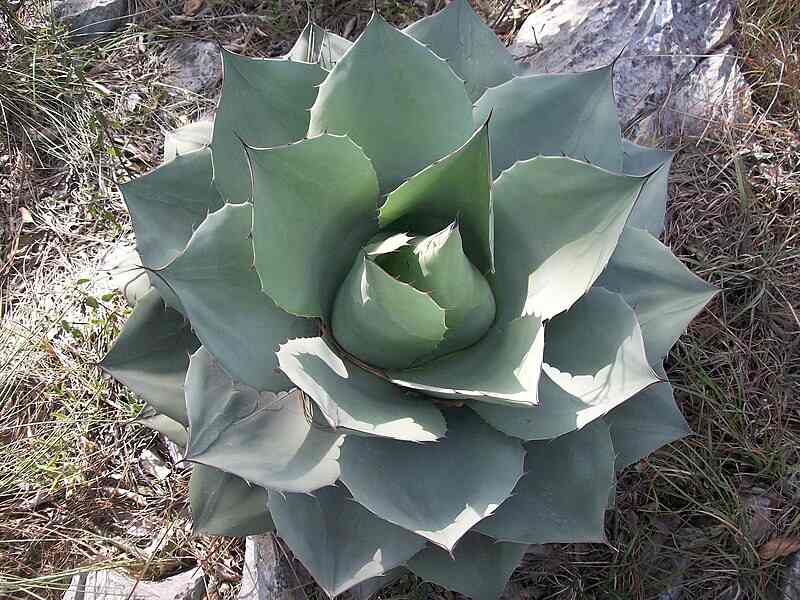
Agave ovatifolia is a succulent, claiming its place as an accent plant in any garden. It has thick blue-gray leaves with small teeth along the margins, forming an impressive round rosette.
This evergreen perennial is native to Northeastern Mexico and flowers only once. It produces magnificent clusters of greenish-yellow flowers on spikes up to 15 feet tall. Use it to add beautiful texture and structure to:
- Mediterranean-style xeriscaping
- Cactus and succulent gardens
- Rock and gravel gardens
- Mature Size: 3-4 feet tall and 4-6 feet wide
- Light: You can plant it in full sun or light shade
- Soil: It thrives in well-drained soil types (chalk, sandy, loam, rocky)
- USDA Plant Hardiness Zones: Best planted in zones 7 to 11
California Sagebrush (Artemisia californica)
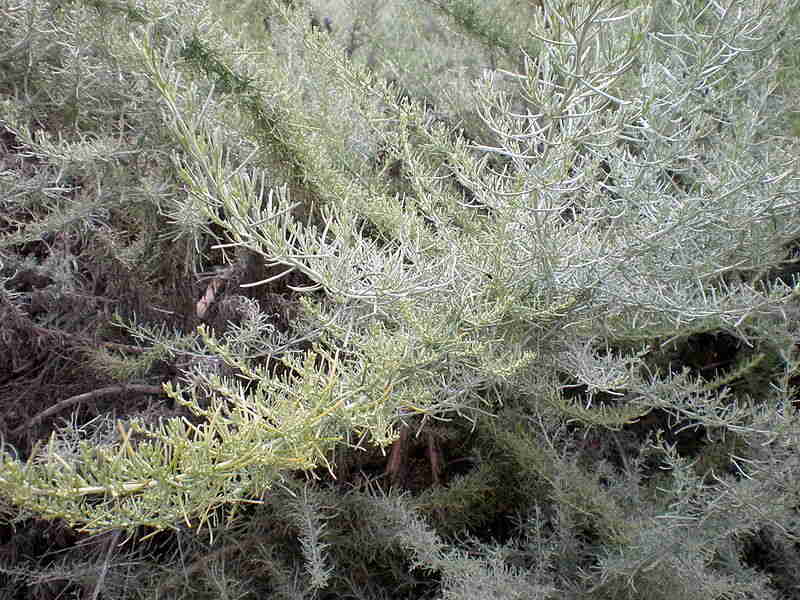
California sagebrush is a perennial shrub and California native plant with beautiful filigree-like light green to gray leaves. It branches from the base to a rounded shape with weedy foliage bearing smooth and fuzzy stems. Tough and easy to grow, California sagebrush is a top choice for south-facing slopes and dry soils.
- Mature Size: Can reach 1-8 feet in height
- Light: Enjoys full sun locations
- Soil: Thrives in shallow, well-drained soil
- USDA Plant Hardiness Zones: Grows better in zones 7 to 10, coastal areas, and dry foothills
Beavertail Cactus (Opuntia basilaris)
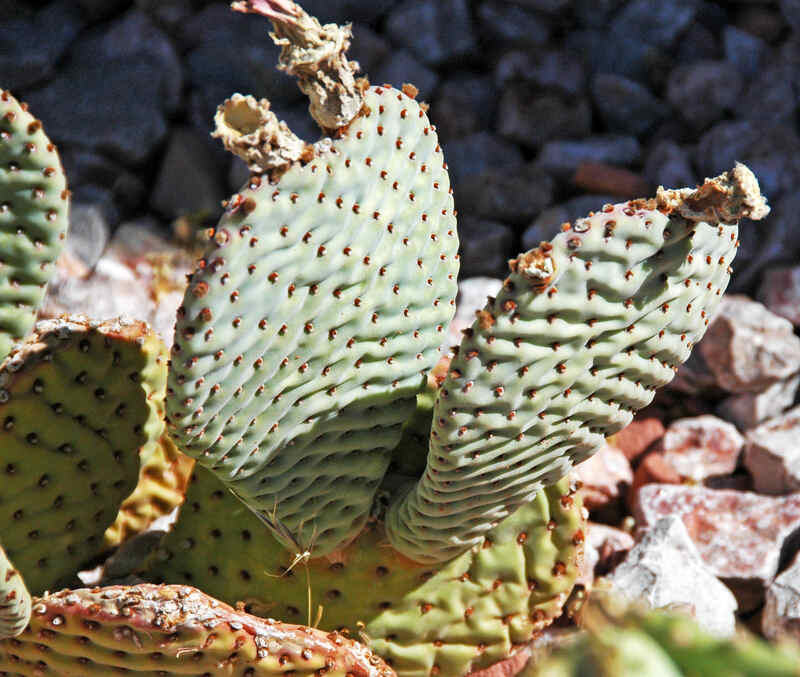
Native to Arizona, Mexico, and the southern regions of Utah, Nevada, and California, the beavertail cactus grows flat, oval to round, blue, blueish-green, or purple pads. It blooms from early spring to summer in dark pink flowers and fits perfectly in gravel and rock gardens.
- Mature Size: Can grow 20 inches high and spreads up to 6 feet wide
- Light: Plant in full sun locations
- Soil: Prefers well-drained soil, loam, or sand
- USDA Plant Hardiness Zones: Hardy to zone 4
Ice Plant (Delosperma)

The ice plant is a year-round ground cover with dense and succulent evergreen foliage. These ground cover flowers bloom from spring to fall, producing lovely pink, yellow, orange, or purple daisy-like flowers. Its foliage has tiny hairs that reflect light, creating the illusion of small ice crystals.
Native to Africa, ice plants thrive as perennials in the dry western regions of the U.S. but tend to be annuals in wetter climates.
- Mature Size: Plants grow 3-6 inches tall and 2-4 feet wide
- Light: Thrives in full sun but tolerates partial shade even if it won’t bloom as much
- Soil: Prefers dry, sandy soils and doesn’t require fertilizers
- USDA Plant Hardiness Zones: Grows best in zones 5 to 9, preferring hillsides, slopes, or raised flower beds that ensure drainage
See Related:
Intermountain West
Blue Grama Grass (Bouteloua gracilis)
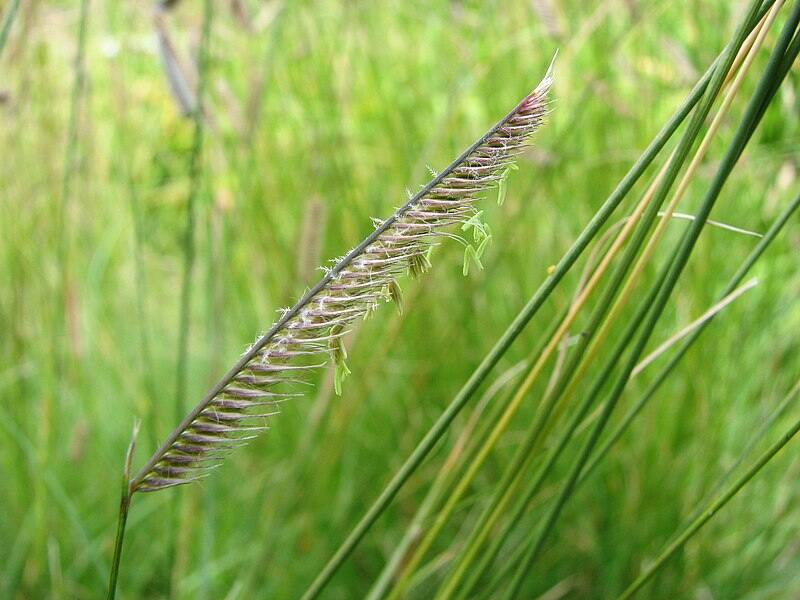
Ornamental grasses are the best way to make a xeriscaping landscape look vibrant. Blue grama is one of the most popular options. A small, clumping, low-growing grass, blue grama thrives in Arizona, Utah, New Mexico, and western Colorado. It has bluish-green foliage and, during summer, forms green and purple spikes.
Note: Keep in mind that blue grama, planted thick and used as drought-tolerant turfgrass, requires some mowing.
- Mature size: Short; grows 1-2 feet tall and up to 2 feet wide
- Light: Thrives in full sun but also grows well in partial shade
- Soil: Prefers well-drained, dry to average soils, from rocky to sandy
- USDA Plant Hardiness Zones: Grows best in zones 5-11
Pinyon Pine (Pinus edulis)
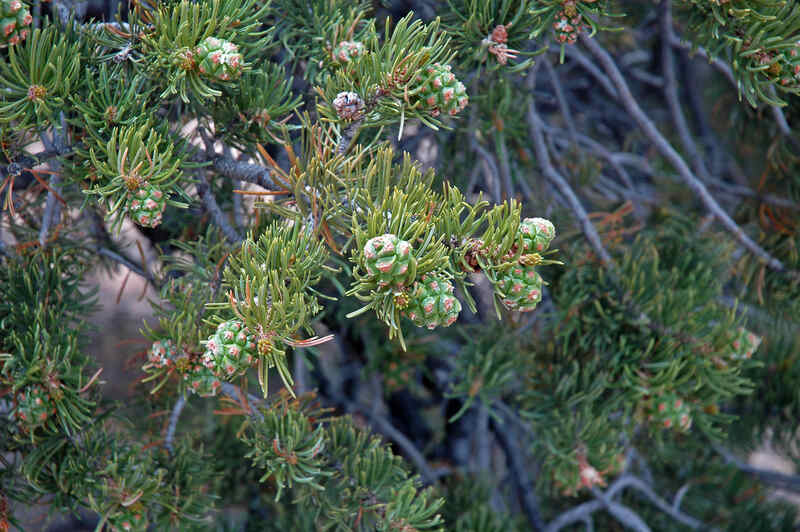
This beautiful evergreen tree is a highly water-efficient plant native to Utah, Colorado, New Mexico, and Arizona. It grows yellow-green needles and produces little round cones looking like brown roses. The pine seeds are edible, but if you want to harvest them regularly, you’ll need to water the tree more often.
- Mature size: Grows up 10-20 feet tall and spreads its branches 10-20 feet wide in about 10 years
- Light: Thrives in full sun
- Soil: Prefers well-drained loamy or sandy soils; can grow on rocky slopes
- USDA Plant Hardiness Zones: Plant pinyon pine in zones 5 to 11
See Related:
Pacific Northwest
California Poppy (Eschscholzia californica)

California poppy is an amazing, vibrant, and cheerful flower perfect for pea gravel and rock gardens, bed flowers, and borders. It’s the state flower of California but also natively thrives in Oregon, Washington, and Idaho. California poppy grows in loose mounds with blue-green fern-like leaves.
The flowers are cup-shaped, with 4 silky petals, typically light orange or orange. It blooms in June and July, and you can also find white, pink, lilac, and red cultivars.
- Mature size: It grows 12-15 inches tall and spreads as wide
- Light: Enjoys full sun
- Soil: Thrives in well-drained, poor to average soil
- USDA Plant Hardiness Zones: Annual plant hardy in zones 6 to 10
Yarrow (Achillea millefolium)
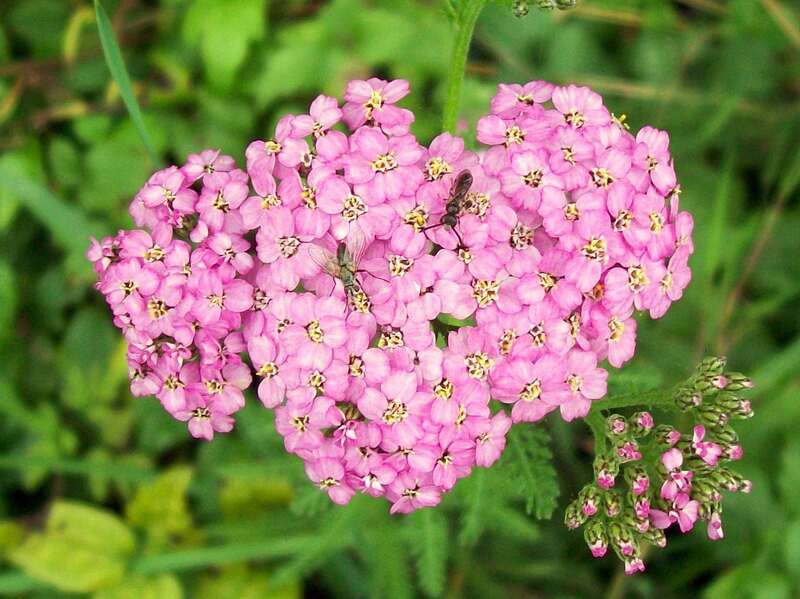
Indigenous to North America, yarrow is a perennial aromatic herb with beautiful clusters of tiny ray flowers. They can be white, pink, red, yellow, or a shade in between. Leaves are deep green, feather-like, placed in a spiral on the flower stalk.
Take note that yarrow is an aggressive plant that can take over your garden easily, especially if you fertilize too much and don’t prune and trim periodically.
- Mature size: The plant grows 2-4 feet tall and 1.5-2 feet wide
- Light: Full sun or partial shade
- Soil: Prefers well-drained soil, sandy to clay, and can grow in dry, poor soils
- USDA Plant Hardiness Zones: Thrives in zones 4 to 8
Midwest and Great Plains
Beardtongue (Penstemon)
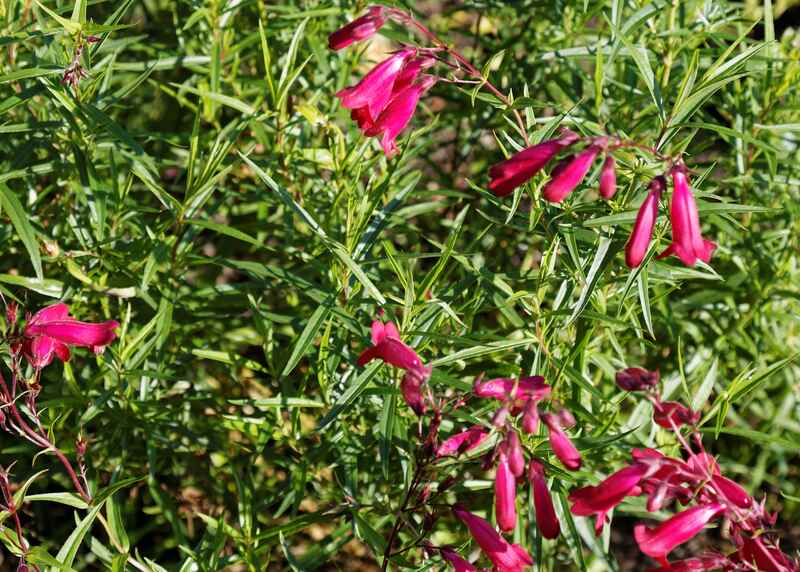
The Penstemon genus includes over 250 species of perennial plants. They have lance-shaped leaves and spikes of small bell-like flowers. Penstemon blooms come in soft colors ranging from orange, red, purple, and blue to white and pink. Flowering starts in early summer, filling your garden with color until yarrow or coneflowers take its place.
- Mature size: Plants grow 6-8 feet tall and 8-20 inches wide
- Light: Flower stems need direct sun exposure to stay upright
- Soil: Prefers well-drained rocky or sandy soil; avoid manure as fertilizer
- USDA Plant Hardiness Zones: They are a good option for zones 3 to 9, but some species are hardy only in zones 4 to 6
Purple Coneflower (Echinacea purpurea)
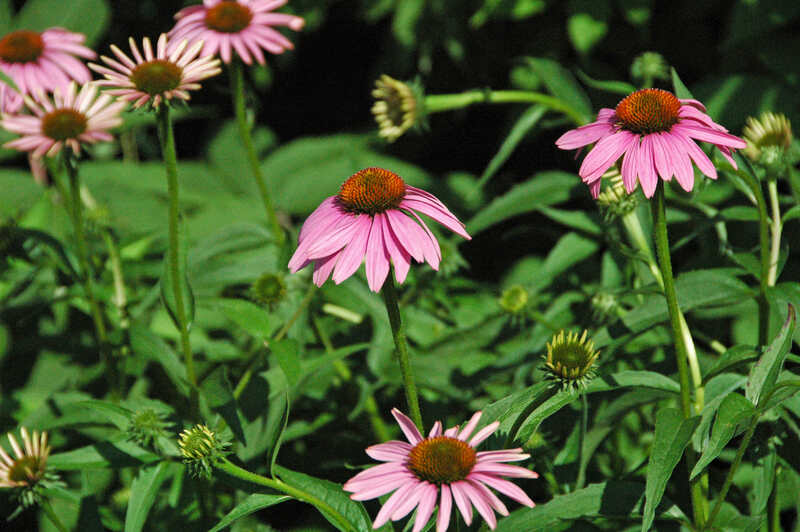
The cheerful purple coneflower is a resilient perennial with deep roots and strong stems. Used as an ornamental plant, echinacea fills the yard with striking summer flowers, mixing pink petals and orange cones.
It’s a popular medicinal plant, is used in cosmetics, and attracts hummingbirds and bees.
- Mature Size: Plants grow 2-4 feet tall and up to 2 feet wide
- Light: Prefers full sun but also blooms in partial shade
- Soil: Thrives in fertile, well-drained soils
- USDA Plant Hardiness Zones: Grows best in zones 4 to 9
Note: Purple coneflower is indigenous to the eastern and Midwestern regions of the United States from New York south to Florida and west to Louisiana and Oklahoma.
Southeast
Shore Juniper (Juniperus conferta)
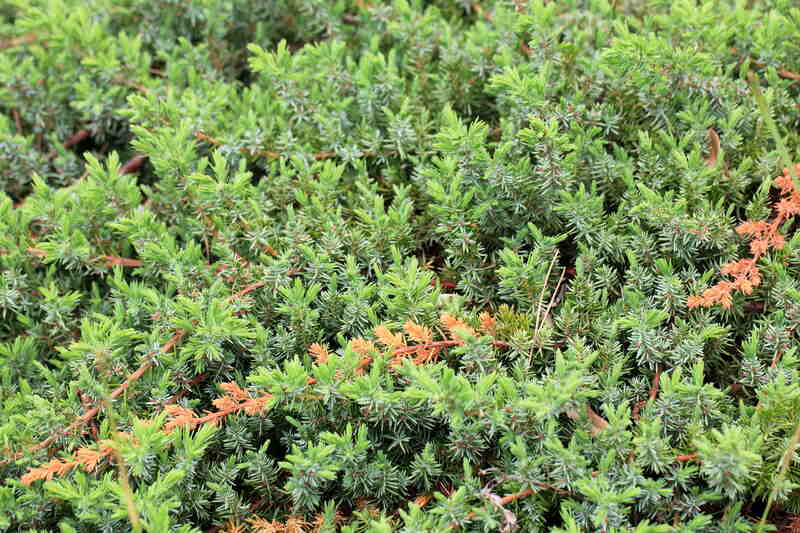
Put shore juniper on the list of dense, low-spreading shrubs you can use as garden ground cover. It will fill your outdoor space with a beautiful carpet of blue-green needles that turn a magical bronze-green in the winter.
Shore juniper is native to Sakhalin Island in Russia. The shrub has a pleasant, fresh, alpine fragrance. It also produces dark-blue or green seed cone fruits that attract birds into your garden.
- Mature Size: 6-12 inches tall and 6-8 feet wide
- Light: Thrives in full sun but will tolerate partial shade
- Soil: Prefers well-drained sandy soil and is adaptable to poor soil
- USDA Plant Hardiness Zones: Thrives in zones 6 to 9
Lavender (Lavandula angustifolia)
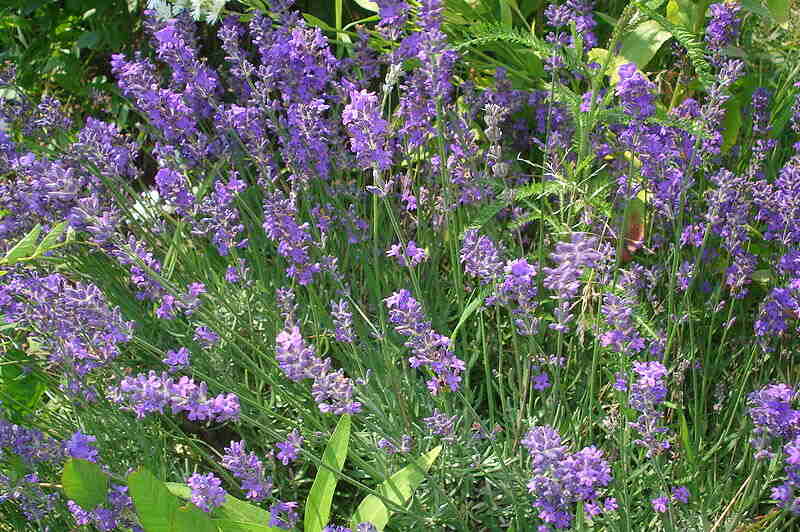
A drought tolerant perennial native to the Mediterranean region, lavender grows as woody shrubs with gray-green to green-purple leaves. During winter, its foliage turns a delicate silver-bronze.
When crushed or brushed against, it spreads a delightful fragrance. Flowers are small, gathered on the top of vertical stems. They range from violet-blue to white, white-pink, or blue-purple, adding beautiful colors to:
- Gravel and rock garden designs
- Mediterranean xeriscapes
- Cottage gardens
- Mature Size: Typically reaches 1-3 feet in height and spreads 1-3 feet wide
- Light: Enjoys full sunlight
- Soil: Prefers well-drained soils (chalk, sand, or loam), but also tolerates rocky soils
- USDA Plant Hardiness Zones: Grows best in zones 5 to 9
Russian Stonecrop (Sedum kamtschaticum)
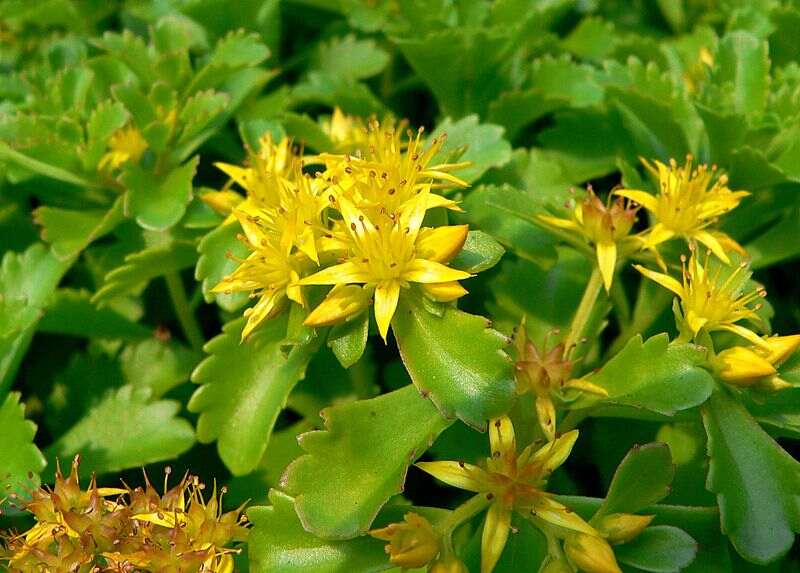
Russian stonecrop is a low-lying flowering plant that blooms in vibrant clusters of star-shaped yellow flowers. Its fleshy and glossy leaves are a dark green that turns bronze in the winter.
When fall comes, this sedum produces scarlet-red fruits, filling your garden with colorful spots. The dense foliage and its ground-hugging growth make this perennial ideal as drought tolerant ground cover.
- Mature size: Low-spreading; growing up to 7 inches tall and 12 inches wide
- Light: Prefers full sun
- Soil: Well-drained; moderately fertile soil
- USDA Plant Hardiness Zones: Native to rocky mountains in Japan and parts of Asia, this plant is hardy in zones 3 to 9
Spanish Dagger (Yucca aloifolia)
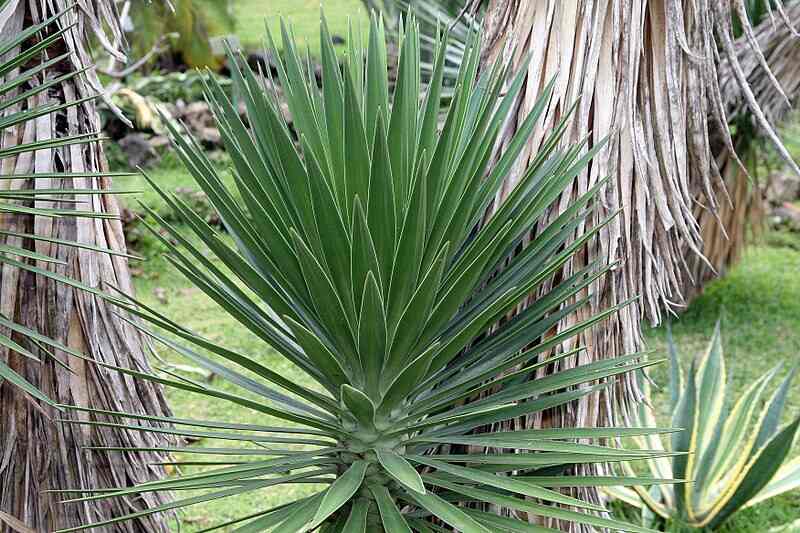
Spanish Dagger leaves can reach 2 feet long and have ends sharp enough to puncture the skin. It’s used as an exotic accent plant in various xeric designs.
It’s a tall perennial shrub, native to the southern U.S., that blooms with edible white flowers from spring to late summer. Popular in Mexico and southern Florida, this succulent is also known as aloe yucca and Spanish bayonet.
- Mature size: Very tall; can reach 10 to 15 feet
- Light: Grows well in full sun
- Soil: Prefers well-drained, sandy coastal soils; tolerant to shallow, rocky soil
- USDA Plant Hardiness Zones: Thrives in zones 8-10
Allegheny Spurge (Pachysandra procumbens)
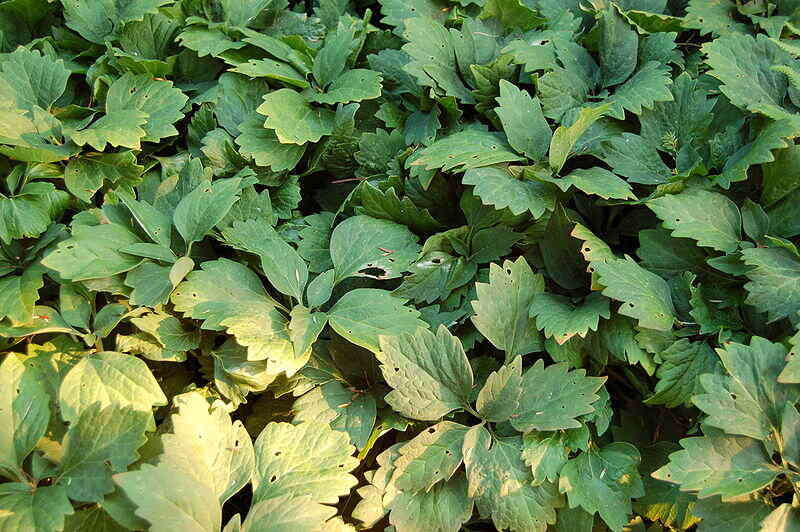
A non-invasive perennial ground cover with dense, matte green leaves, the Allegheny spurge spreads as a low maintenance, shade-loving ground cover. It’s a woodland plant common in Florida, Kentucky, Louisiana, and West Virginia.
It grows best under trees and shrubs and blossoms in early spring, with fragrant, tiny flowers on spikes up to 4 inches tall.
- Mature size: Typically grows under 6 inches tall and spreads 1-2 feet wide
- Light: Needs partial or deep shade
- Soil: Thrives in well-drained, rich soils
- USDA Plant Hardiness Zones: Thrives in zones 5 to 9
See Related: Drought-Tolerant Landscaping for Gainesville
Northeast
Black-Eyed Susan (Rudbeckia hirta)
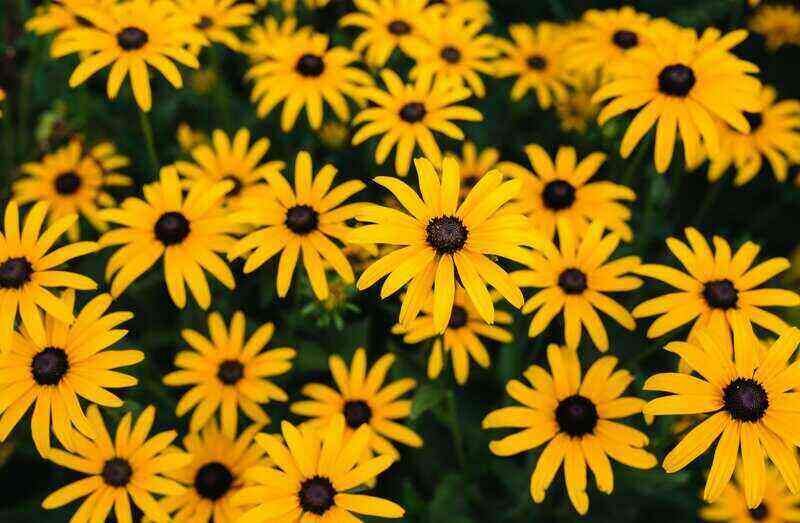
Black-eyed Susan is a tall wildflower that is native to North America that can grow up to 2 feet wide. Its flowers bloom in bright yellow petals with a protruding brown center.
This sun-loving flower adds a splash of bright color to xeriscapes, and its vibrant blossoms attract pollinators to your yard. Black-eyed Susan likes growing in open areas with disturbed soils.
Perennial
- Mature Size: Reaches heights of 1-3 feet and can be 1-2 feet wide
- Light: Grows well in full sun
- Soil: Disturbed soils, moist but well-drained soils.
- USDA Plant Hardiness Zones: Thrives in zones 3 to 7
Tall Tickseed (Coreopsis tripteris)
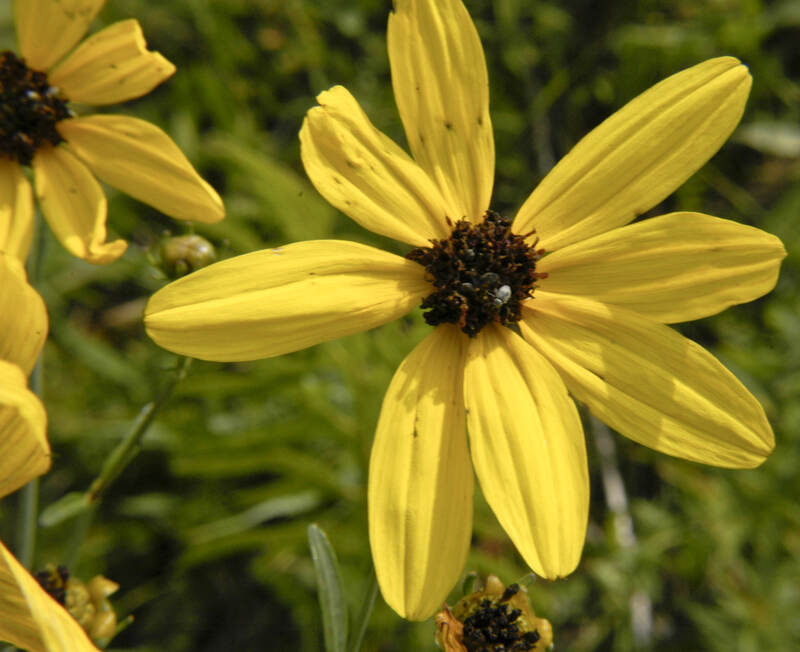
Tall tickseed has small, daisy-like flowers with bright yellow petals and a brown disk in the middle. It’s a perennial wildflower preferred for cottage-style xeriscaping. This perennial blooms from summer to late fall, adding light and color to outdoor spaces.
- Mature Size: Reaches 2-8 feet in height and spreads 2-8 feet wide
- Light: Prefers full sun
- Soil: Grows in well-drained soil (sandy, rocky, or clay); poor to medium quality
- USDA Plant Hardiness Zones: Thrives in zones 4 to 9
FAQ About Best Plants for Xeriscaping
Including design, materials, plants, and professional installation, the cost of a xeriscaping project for an entire front or backyard ranges from $15,120 to $18,400. Prices vary with location, design style, and additional services you might require.
Cacti and succulents are among the most drought-tolerant plants. They use their fleshy texture to store water when available, and their waxy surface prevents evaporation. But these aren’t the best drought-tolerant options for every landscape.
“Typically, Extension recommends selecting plants that are native to or well-adapted to your specific region, since these plants are typically hardier and more resilient to local conditions,” says Robyn Stewart, the University of Georgia’s Lincoln County ANR agent.
John Murgel, Extension specialist at Colorado State University, agrees: “Agaves, for example, are not great choices for the Northeast, because they will get too much water. Many plants marketed as “drought-tolerant” in the eastern half of the country wither quickly in the arid and semi-arid West,” he says.
It depends on the type of plant, but generally, one of the benefits of xeriscaping is that plants are well-equipped not only to handle hot temperatures but to endure chilly winters as well. “Most xeriscapes do well in the winter, since plants are selected based on local climates and well-equipped to handle the winter conditions in that area,” says Stewart.
For the best results, Stewart advises homeowners to choose plants adapted to their local environment. Here are the factors to consider:
• Average rainfall
• Temperature extremes
• Humidity levels
• Elevation
• Seasonal patterns
• USDA hardiness zones
• Soil texture and drainage
• Sun exposure
• Wind patterns
Add Plants to Your Xeriscape Today
Xeriscaping plants don’t have to be boring or all succulents and prickly cacti. You can add a variety of color to your yard with beautiful wildflowers such as tall tickseed, flowering ground covers such as ice plant, or even hardy trees like the pinyon pine.
If you’re not sure what plants will work best for your yard, don’t hesitate to find a professional landscaper who can help you design a drought-friendly yard by helping you select plants that are the perfect fit for your yard.
Sources:
- “Incorporating Pacific Northwest Native Plants Into Your Water-Wise Landscapes.” By Linda R. McMahan at the OSU Extension Service, Oregon. Oregon State University.
- John Murgel, Extension county specialist at the Colorado State University Extension, Castle Rock, CO. Personal interview.
- Robyn Leigh Stewart, University of Georgia’s Lincoln County ANR Agent, Lincolnton, GA. Personal interview.
Main Image Credit: Maja Dumat / Flickr / CC BY 2.0